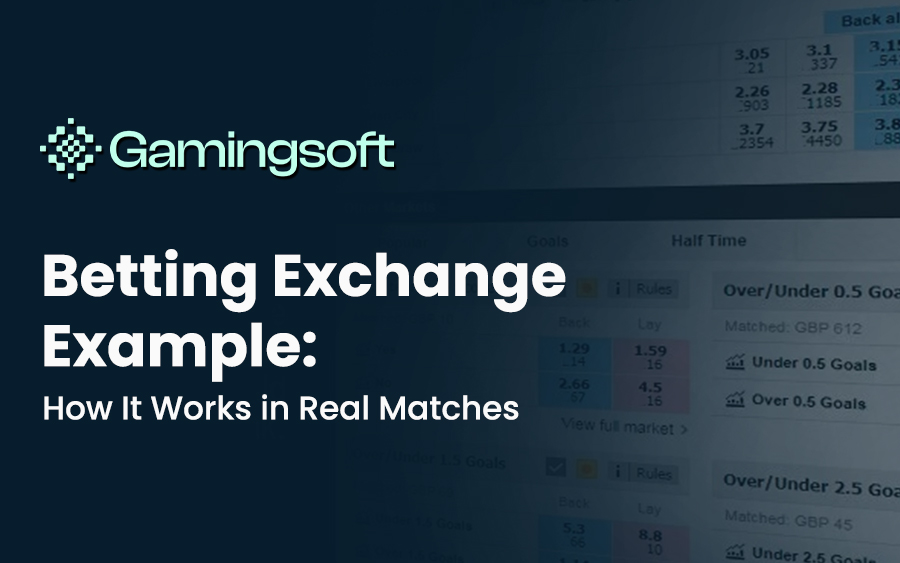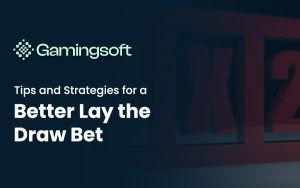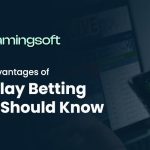Traditional sports betting is simple: pick a team, place your bet, and wait for the result. If your prediction is right, you win; if not, you lose. But betting exchanges flipped that idea. Instead of betting against a bookmaker, you’re now betting against other players — in a marketplace where odds move like stock prices. This model gives bettors more flexibility, better odds, and the chance to both back and lay outcomes. If you’ve ever wondered how that actually works in a real football or horse racing match, this guide will walk you through a step-by-step example.
By the end, you’ll understand not just the mechanics, but also the potential strategies and insights this system brings to the iGaming world.

What Is a Betting Exchange?
A betting exchange is an online marketplace that connects people who want to back an outcome (bet it will happen) with those who want to lay it (bet it won’t happen).
- Backing = betting for something to happen.
- Laying = betting against it happening.
The exchange itself doesn’t take sides — it just matches users and charges a small commission on net winnings.
Think of it like eBay for bets: instead of buying and selling items, you’re trading predictions about sports outcomes.
Why Use a Betting Exchange Instead of a Bookmaker?
In traditional sportsbooks, the bookmaker controls the odds. They build in a margin to ensure profit. In an exchange, the market sets the odds — meaning players often get better prices and can even create their own odds.
For example:
- Bookmaker odds on Liverpool to win might be 2.30
- On a betting exchange, you could find 2.42
That small difference can significantly increase long-term profits for sharp bettors.
Exchanges also allow advanced tactics like hedging, trading, and arbitrage, which are impossible in fixed-odds betting.
Real Match Example: Back and Lay in Action
Let’s take a real-world style example.
Match: Manchester United vs Arsenal
You believe Manchester United will win.
- Back Bet: You back Man United at odds of 2.50 with a $10 stake.
- If they win → you get $25 (profit = $15).
- If they lose/draw → you lose $10.
Now, somewhere else on the exchange, another user believes United won’t win — so they lay Man United at the same odds.
- If United lose or draw → the layer wins your $10.
- If United win → the layer pays you $15 (their liability).
That’s a matched bet — and this is how exchanges operate 24/7, automatically matching users with opposite opinions.
Understanding Liability in Lay Bets
When you lay a selection, you’re acting like a bookmaker. You collect the backer’s stake if you’re right — but you’re also taking on liability if you’re wrong.
Using the same example:
- You lay Man United at 2.50 for a $10 stake.
- If United win, your payout is $15 (because 2.5 × 10 = 25 → 25 − 10 = 15).
So, $15 is your liability — the amount you risk losing.
If United lose or draw, you keep the backer’s $10 stake.
This is a crucial difference between a lay bet and a normal back bet — your potential losses are often higher than your initial stake.
In-Play Example: How Odds Move During a Match
Now let’s add some action.
The match starts, and after 15 minutes, Manchester United score an early goal.
Before Kickoff:
- Man United to Win: 2.50
- Arsenal to Win: 2.80
- Draw: 3.40
After 15 Minutes (Man United lead 1–0):
- Man United: 1.50
- Arsenal: 6.00
- Draw: 4.20
Because United are now leading, their odds drop sharply.
This gives you the chance to trade — locking in profit regardless of the final result.
Trading Example: Locking in Profit
You backed Man United before kickoff at 2.50 for $10.
After they score, you can lay Man United at 1.50 for $16.67 to secure a guaranteed profit (a technique called green-booking).
Let’s calculate:
- If United win →
Back profit = +$15
Lay loss = −$8.33
Net profit = +$6.67 - If United draw or lose →
Back loss = −$10
Lay win = +$6.67
Net profit = +$6.67
You’ve locked in a profit no matter what happens next.
That’s the power of trading on an exchange — you can manage your position live as the market changes.
Example from Horse Racing: Lay the Favorite
Betting exchanges aren’t limited to football — they’re huge in horse racing, where odds move quickly and liquidity is high.
Let’s say you think the race favorite is overhyped.
You decide to lay the favorite at odds of 3.00 for a $20 stake.
- If the horse doesn’t win, you win $20.
- If the horse wins, you pay $40 (your liability).
It’s a higher-risk move, but profitable over time if you identify weak favorites.
Professional traders often use data analytics and AI-powered models to find lay opportunities in volatile markets like horse racing and tennis.
Partial Trading and Cash-Out
Most exchanges also allow partial trading, letting you adjust your position during the game.
Example:
- You back Arsenal at 3.00 pre-match.
- They play well and the odds shorten to 2.00.
- You lay half your stake at the new price.
This reduces risk and lets you cash out part of your potential winnings — a common practice in live betting.
For operators, providing smooth and transparent in-play trading tools is key to player retention.
Common Betting Exchange Strategies
Here are a few real-world tactics that illustrate how flexible exchanges can be:
Scalping
Placing quick back and lay bets with small odds differences to make tiny, low-risk profits — repeated many times during live play.
Swing Trading
Taking advantage of big price movements (for example, a red card or goal in football) and trading both sides before and after the event.
Hedging
Backing and laying across different markets to spread risk — for example, betting on both “Match Winner” and “Over/Under Goals” markets.
Laying the Draw
A classic strategy where you lay the draw before kickoff and back it later if the match slows down — used often in football trading.
Why Exchanges Benefit Operators Too
Even though betting exchanges are player-to-player, operators and suppliers still benefit significantly.
For B2B iGaming companies, exchanges:
- Encourage higher user engagement through active trading.
- Generate consistent revenue via commission instead of margin.
- Provide transparent, data-rich environments ideal for AI analytics.
- Appeal to experienced bettors seeking market-like control.
Many modern platforms integrate hybrid models, combining sportsbook and exchange elements for maximum flexibility and retention.
Conclusion
Betting exchanges empower players to think beyond win-or-lose outcomes.
They reward strategy, timing, and understanding of market psychology.
Through the examples above — from football trading to horse racing lays — you’ve seen how real match dynamics create profitable opportunities for those who learn the system.
For newcomers, start small and observe how odds shift during live play.
For operators and developers, exchanges offer a blueprint for the future: an open, player-driven betting world where transparency, liquidity, and innovation define success.
About Gamingsoft
Gamingsoft is a leading provider of online casino solutions, offering a comprehensive suite of services, including a white-label solution, API integration, payment solutions, game development, and more, to iGaming operators worldwide. With over years of experience, Gamingsoft has earned a reputation for delivering innovative and reliable solutions, helping clients succeed in the competitive iGaming industry.









